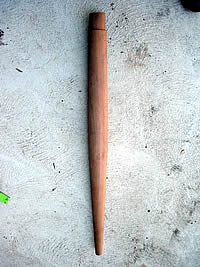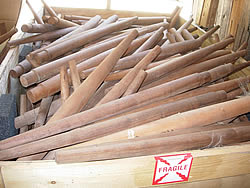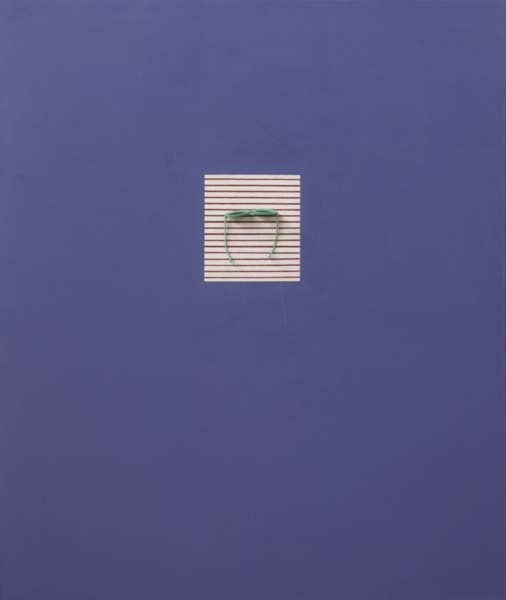Schwarz
View current page
...more recent posts
inflate-o-pub
via j zoller
It seemed destined for the wrecking ball, like so many other midcentury buildings by the architect Paul Rudolph.
It wasn’t that the owners didn’t appreciate the sleek, rectangular house; they simply wanted a larger vacation home for the site, on a scenic bluff in Watch Hill, R.I.
two guys and a photograph
buy of the week, hammer price $450.00
Muriel
Wallace and Donahue (20th Century) Muriel, 1983; Oil and latex on canvas with sunglasses; Signed, dated and titled; 68" x 56"; Provenance: Margo Leavin Gallery, Los Angeles (label on verso); Private Collection
rubens tube
also via john zoller
ACME Klein Bottle
via j zoller
Over the last two decades as Mr. Serra’s work has become more and more sought-after by institutions and collectors, these kinds of installation scenes, worthy of the Army Corps of Engineers, have played out countless times around the world, with sculptures arriving by boat and truck at sites from Seattle to Spain to Qatar.
What he does do is design buildings that are uncommonly responsive to the environment in which they sit, to the indigenous physiognomy of the landscape, the angle of the sun, the path of the wind, the shapes of the leaves on the trees. By mixing together Australia’s vernacular style with the clean lines of classic Modernism, he has created an architecture that’s both true to the place and unexpectedly rigorous, like a bow and arrow made out of titanium. The recent widening of his reputation owes a lot to the profession’s gradual conversion to the gospel of environmentalism, but he remains stubbornly autonomous and openly wary of catchphrases and clichés. (Of “sustainable architecture” he noted: “Most of it is bloody awful. Much of it isn’t architecture, and some of it isn’t sustainable.”) But the Pritzker is a machine for star-making, and as a result, this most resolutely local of architects has slowly acquired an international profile.from this weeks nyt magazine eco-tecture issue
nice richard pettibone lot
squandered heritageNOLA -- We have written about the imminent danger list before. The difficulty in tracking this list is that there are simply too many properties listed to maintain an effective overight.
This spring, a plane-shaped piece of roadside architecture is preparing for takeoff.
Built as a Texaco gas station in 1930 in Powell, Tenn., the small building was falling down when a group formed four years ago. "It was self-destructing," says Rock Bernard, head of the Airplane Filling Station Preservation Association. "It had been abused. It had had little or no maintenance at all."
Now the nonprofit, hoping to create an office or visitors center, is fixing the plane's right wing and windows.
Despite the success of saving Johnson’s masterpiece, other less well-known Modernist buildings across the United States are now facing demolition. The main threat comes from skyrocketing land prices; these landmark buildings are prized more for their land than their architecture, say design curators and preservation experts nationwide. Barry Bergdoll, chief curator of architecture and design at MoMA, believes that for every Modernist structure saved, two are torn down and many are altered. Other experts believe the number of modernist buildings demolished could be considerably higher.
sonnenbrillen präzisionswerfen bei orschlurch.de - sonnebrille sonne
via jz
chernobyl at 21
via john zoller
Tiravanija’s redux of Untitled 1992 (Free) acts as a kind of invading organism that usurps the function of the gallery, displacing it with real life. All this is underscored by another recreation at Zwirner’s, next to Tiravanija’s. It is a signature piece of post-minimalist sculpture by the late Gordon Matta-Clark, made exactly 20 years before the Tiravanija, and as fate would have it, at the exact same address on Greene Street in SoHo where Tiravanija originally made Untitled 1992 (Free).
Nevelson was sui generis. Though a quintessential modernist, she was no joiner. During her long life of artistic activity, she studied Cubism, flirted with Surrealism, and imbibed the influence of Minimalism, but no avant-garde movement could claim her. She was Mark Rothko's favorite sculptor, but she wasn't hanging out with the Ab-Ex crowd at the Cedar Tavern. Jed Perl, who gives her short shrift in New Art City, his survey of mid-20th-century Manhattan's artistic avant-gardes, links her work with the sculptor Richard Stankiewicz's "junkyard Constructivism." But Stankiewicz (a generation younger) and David Smith (her nearer contemporary) were welders, while she worked with the regenerative capacities of wood, a once-living medium. And the room-size environments she began fabricating in the 1960s preceded the advent of installation art by some 20 years.
Tomorrow, the Maison Tropicale, a small aluminum-paneled house built in 1951 by Jean Prouvé, a French designer and the current court favorite of well-heeled contemporary art and design collectors internationally, is being opened to the public for preview in Long Island City. Christie’s, the auction house, will offer it for sale on June 5. The presale estimate is $4 million to $6 million.


george nakashima cherry wood table legs $20 each
An observation of the observations of Don Van Vliet by Anton Corbijn
farmhouse construction photos on yellow and white check tablecloth
pet monkey photos
Rock and roll, despite the reputation many of its artists have for mayhem and property destruction, has a surprising number of historic landmarks that didn't just survive—they thrive. Given rock and roll's status as a genuine, homegrown American product, like baseball it enjoys a growing number of wanderers who love hitting the road in search of the landmarks that define the art.

